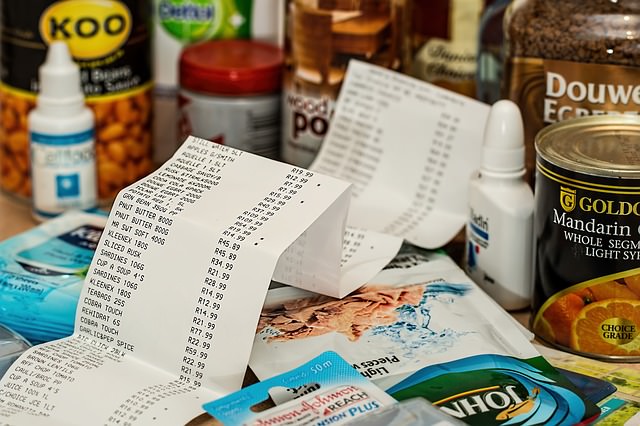
|
Did you know that according to the Bureau of Labor Statistics report, food is the third-largest household expense? In fact, as stated by the USDA, an average monthly tab for a family of four runs between $568 for those on a tighter budget, to $1,293 for those on a more liberal budget. But while groceries do tend to take quite a bite out of your paycheck, employing the following changes to your shopping habits can cut your bills down by 25 percent - in other words, you could potentially save $1,700 and $3,900 in annual savings - now that sounds pretty delicious, doesn't it? |
|
Take a look at the following tips that I have used in recent months, to help me save hundreds of dollars on my groceries. |
 |
|
1. Do an inventory: How often do you impulse buy an item at the supermarket, only to go home and find you already have it? To save your money, once a month, take stock of your pantry and freezer - doing so will enable you to get a sense of what items you need to restock on, and what you can skip. |
|
Tip: Install the app, Out of Milk, to help you with your inventory. This nifty app allows you to share and sync your shopping list with others too! |
|
2. Plan meals based on ads: You're always likely to find a great deal at the supermarket. But, instead of planning your weekly meal and then searching for whatever deal you can find, first, search for deals, then plan your meals based around what's on sale. That way, you can get your meals for half price. |
|
3. Make use of what's in your pantry: Did you know that Americans typically toss about 25 percent of the groceries they buy? To prevent your food from turning into wasted money, besides sorting through your pantry and freezer once a month, sort through your fridge once a week, keeping an eye out for items that are about to expire, then place them in a designated spot, so that you remember to eat them before they go bad. |
|
Tip: Unsure of what to cook? Set up an account with Supercook. This site will help you find recipes based on the ingredients you need to use up! |
|
4. Reduce your grocery shopping to once a week: As expected, the less you shop, the more you save. Keeping your shopping habits down to just once a week will reduce impulse purchases. Reducing your trips to the store, will also help save you gas. |
|
5. Weigh it: Don't be fooled by a product's sticker price. Be sure to compare items by their price per ounce or pound, to ensure that you are getting the best deal. In the case of meat, be on the look-out for cost per serving instead, so as not to be misled by the bones and fat included in the weight of the item. |
 |
|
6. Download coupons: Instead of circling and cutting coupons, download them instead - these sites: coupons.com, SmartSource.com and redplum.com, make it easy to see what coupons are readily available in your area. You also have the option of printing them out or loading them onto a store loyalty card - that way, you won't even need to remember to bring them with you. For an even greater deal, wait until the item you want to purchase is at a really good sale price - allowing you to benefit from both the store discount and the coupon. |
|
7. Photograph your receipt: With apps like Ibotta, SavingsStar and Checkout51, it is possible to earn cash-back on your groceries. These services offer weekly cash-back deals on a wide variety of products - and all it takes is a photo of your receipt showing that you purchased the item. |
|
8. Shop alone: Did you know that the more people you shop with, the more likely you are to make impulse purchases? According to Marketing Science Institute study, about 65 percent of the items in our baskets when we group shop are unplanned. So, to save on costs leave your spouse and kids behind. |
|
9. Grab a bite before you go: The smell of baked goods and rotisserie chickens and other tempting smells can be too much to bear when shopping at a supermarket, which according to a study in the Journal of Consumer Research, increases the likelihood of impulse buying. Alternatively, if you haven't eaten before, take a mint - this will help satiate hunger. |
|
10. Put on headphones: There are tricks that companies use to manipulate our minds and persuade us to buy - one of those tricks includes store music. Studies show that stores play music with a slower beat, encouraging you to move slower through the aisles. In fact, it was discovered that a slower pace can lead shoppers to buy 29 percent more. |
 |
|
11. Avoid the middle shelves: It may be surprising to discover, but companies pay to place products at eye level. So, to avoid costly items and expensive brands, scan top and bottom shelves - the best deals are usually located there. |
|
12. Do your own slicing and dicing: Foods that are pre-packaged or single-serving tend to be marked-up. While it may be more time-consuming to buy the whole chicken, block cheese or pineapple and do the chopping yourself, it would actually save you more in the long run. You can also create your own smaller servings by dividing the food into baggies or Tupperware. |
|
13. Grow your own herbs: Herbs at $2 plus a pop can be quite expensive, you'll also never be able to use them up in time. But, planting a couple of pots with fresh herbs to keep in your kitchen or porch will only set you back at a one-time cost of around $5 - that way, you'll always have fresh herbs ready, and you won't end up wasting any. |
|
14. Buy what's in season: Doing so, will enable you to save around 30 to 50 percent on the price of produce. As this is not always possible, consider buying produce (such as berries) when they're in season, but buy extra and freeze - this will allow you to enjoy them year round. This chart will give you a better idea on what's in season throughout the year (for the US). |
|
15. Keep an eye out on seafood labels: Labeled in small print, look out for seafood products tagged 'previously frozen'. Chances are, you'll be able to find the same thing in the frozen-food aisle section for as much as 40 percent less. Also, by buying the product frozen and thawing it yourself (in your own time), will keep your fish fresh for longer. |